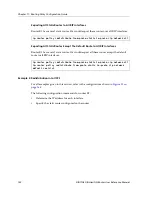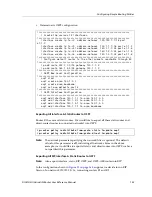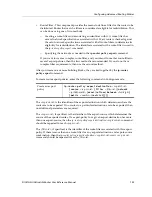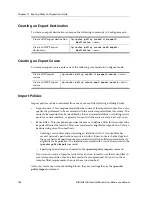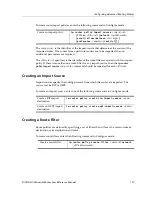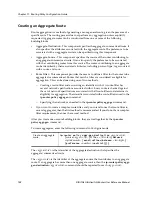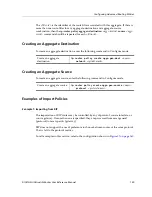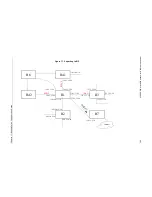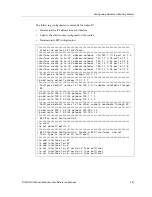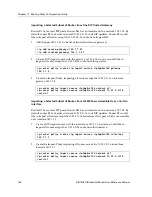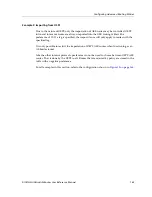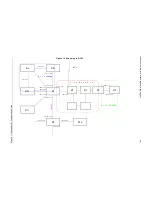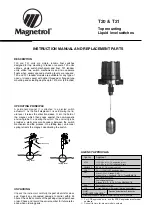
Chapter 11: Routing Policy Configuration Guide
166
DIGITAL GIGAswitch/Router User Reference Manual
Examples of Export Policies
Example 1: Exporting to RIP
Exporting to RIP is controlled by any of protocol, interface or gateway. If more than one is
specified, they are processed from most general (protocol) to most specific (gateway).
It is not possible to set metrics for exporting RIP routes into RIP. Attempts to do this are
silently ignored.
If no export policy is specified, RIP and interface routes are exported into RIP. If any policy
is specified, the defaults are overridden; it is necessary to explicitly specify everything that
should be exported.
RIP version 1 assumes that all subnets of the shared network have the same subnet mask
so it is only able to propagate subnets of that network. RIP version 2 removes that
restriction and is capable of propagating all routes when not sending version 1 compatible
updates.
To announce routes which specify a next hop of the loopback interface (i.e. static and
internally generated default routes) via RIP, it is necessary to specify the metric at some
level in the export policy. Just setting a default metric for RIP is not sufficient. This is a
safeguard to verify that the announcement is intended.
For all examples in this section, refer to the configuration shown in
Figure 17 on page 160
.
The following configuration commands for router R1:
•
Determine the IP address for each interface
•
Specify the static routes configured on the router

